Roland digital pianos, particularly models from the mid-90s to the early 2000s, are known for their unique feel and sound. However, many owners face a common issue: the failure of the infamous plastic weighted hammers!
The Issue with Original Roland Hammers
The original hammers were constructed by surrounding a lead weight in a very thin layer of plastic. Cracks form around the encased lead weight, and once these cracks form, the hammers inevitably break. Often the shrapnel from the broken hammers causes other problems inside the cabinet.
I’ve talked to quite a few people about this, including G&G Products in Kennebunk, Maine who specializes in injection molding. There’s reason to believe that both the design and the manufacturing process were not optimal. The hammers themselves are resistant to adhesive, so repairs generally don’t work. Roland stopped manufacturing these hammers in 2020.
It’s very unfortunate: Owners of otherwise beautiful Roland keyboards can no longer play their instruments (reddit.com, pianoworld.com). And even worse, Roland shows no interest in the issue.
Previous solutions have included multiple designs of 3D printed blanks. You can print these using a 3D printer and then add weights from the old hammers. This has the advantage of being very inexpensive, but also very time and labor-intensive.
Some technicians have used steel-infused epoxy, but the fix is difficult to apply, and the thin plastic provides very little surface area for the repair. Epoxy usually fails. For years, I’ve replaced them using “old new stock” hammers, although I worry these will have the same problems decades hence.
Syntaur to the rescue! They now manufacture replacement sets. The price is considerable, but the quality is very good, and at least the option now exists!
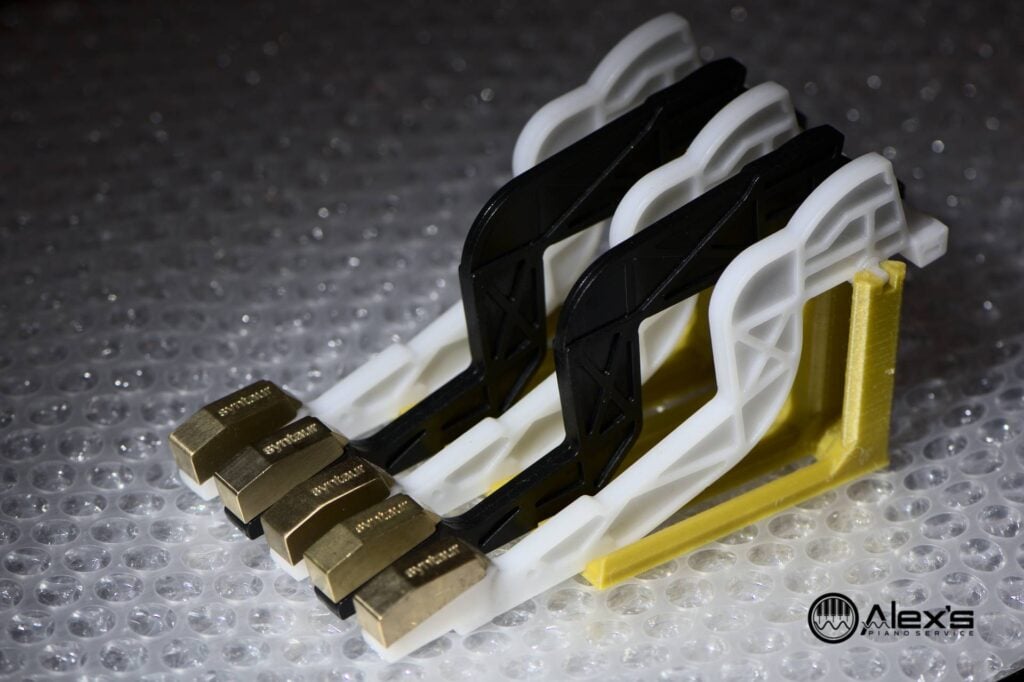
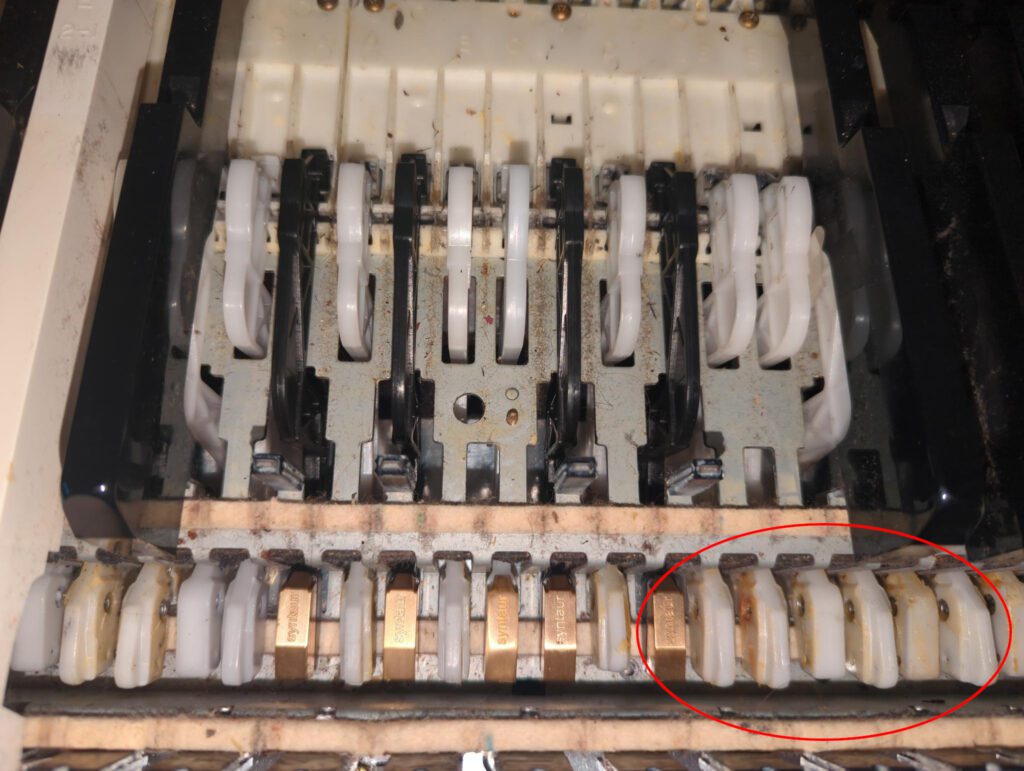
List of Models Impacted
This is a partial list of Roland keyboards I know use these hammers. If you’re happening upon this article because you’re considering purchasing one of these models, have caution! This problem will occur, and you will need to replace broken hammers at some expense:
Models: RD-600, A-90, HP-145, KR-370, KR-570, XV-88, A-90, A-90EX, FP-1, FP-8, FP-9, HP-145, HP-147, HP-236, HP-237, HP-237E, HP-245, HP-2800, HP-2800G, HP-2880, HP-330, HP-330E, HP-335, HP-3800, HP-3800G, HP-530, HP-530E, HP-535, HP-550G, HP-555G, HP-5700, HP-730, HP-7700, KR-1070, KR-370, KR-375, KR-4300, KR-570, KR-570W, KR-575, KR-575P, KR-770, RD-500
The part numbers are PA-4B N-KEY HAMMER 04671289 and Roland PA-4B S-KEY HAMMER 04671290.
The Syntaur Replacement Hammers
Syntaur has stepped in to provide a much-needed solution. Their replacement hammers are designed to be more durable and are available in various quantities: octave sets, complete sets of 88, or individual hammers for white and black keys. The new hammers are color-coded, which makes them easier to identify and install. They’re priced at around $160 per octave, so they’re not inexpensive, but they’re a considerably better option.
Opening the Cabinet
The first step is opening the cabinet. How this is done varies between models. Below is one relatively common design. Many Roland digital pianos open in a sort of clamshell design. If you’re lucky enough to have one of these, remove the screws pictured (or their equivalents), and the keyboard will open up easily.
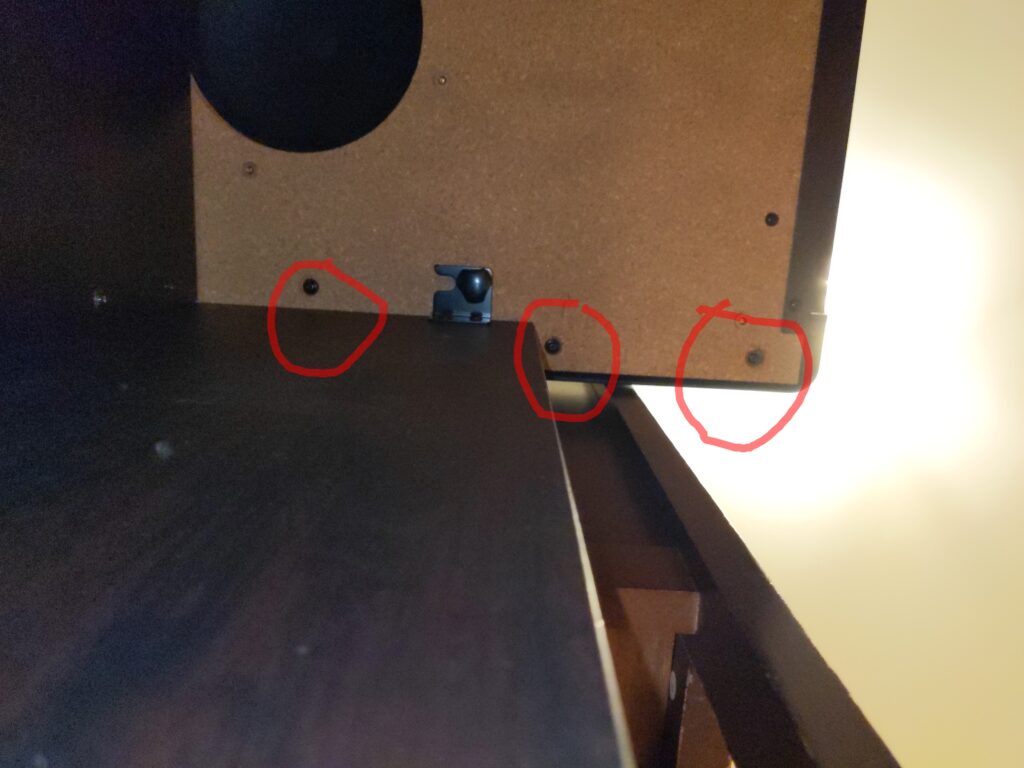
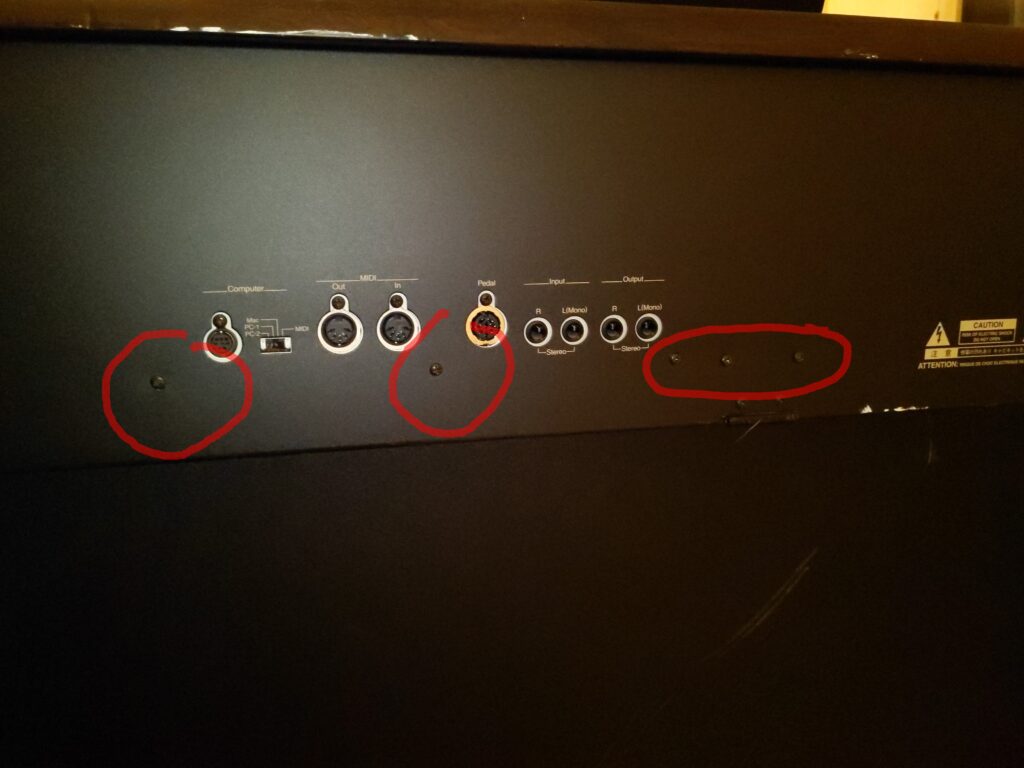
Now unscrew the keyboard. The keyboard is held in by a rank of screws at the back, and a rank underneath the front. Undo both rows of screws. You only need to move the keyboard back an inch, but it must be unscrewed to do this.
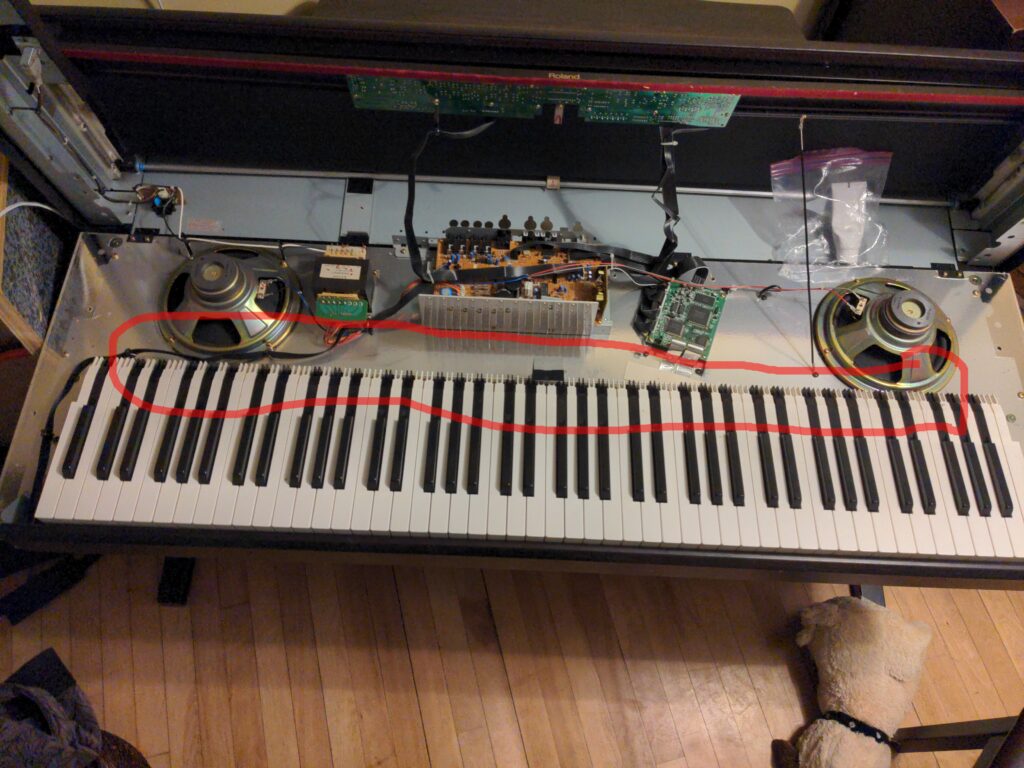
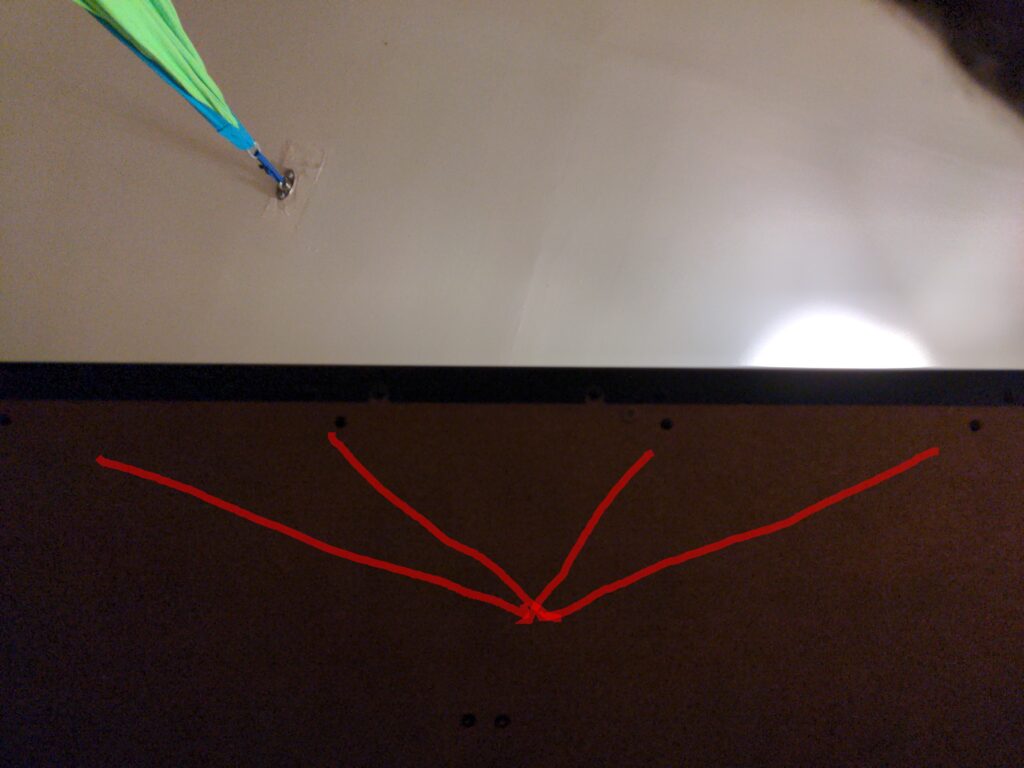
Once the keyboard is unscrewed, move it back about an inch. You’re now ready to remove the hammer! If you’ve never done it before, this feels challenging. But with a pair of needle-nosed pliers, they pop out easily:
Other Guides and Videos
All of the above looks similar for different keyboards, but the exact manner of opening up the case will vary. The most important part is gaining enough access to scoot the keyboard back about one inch. Here’s another video by another person repairing their hammers. There are numerous other videos of repairs.
I also encountered this very detailed photo gallery of a hammer replacement by Anachostic.
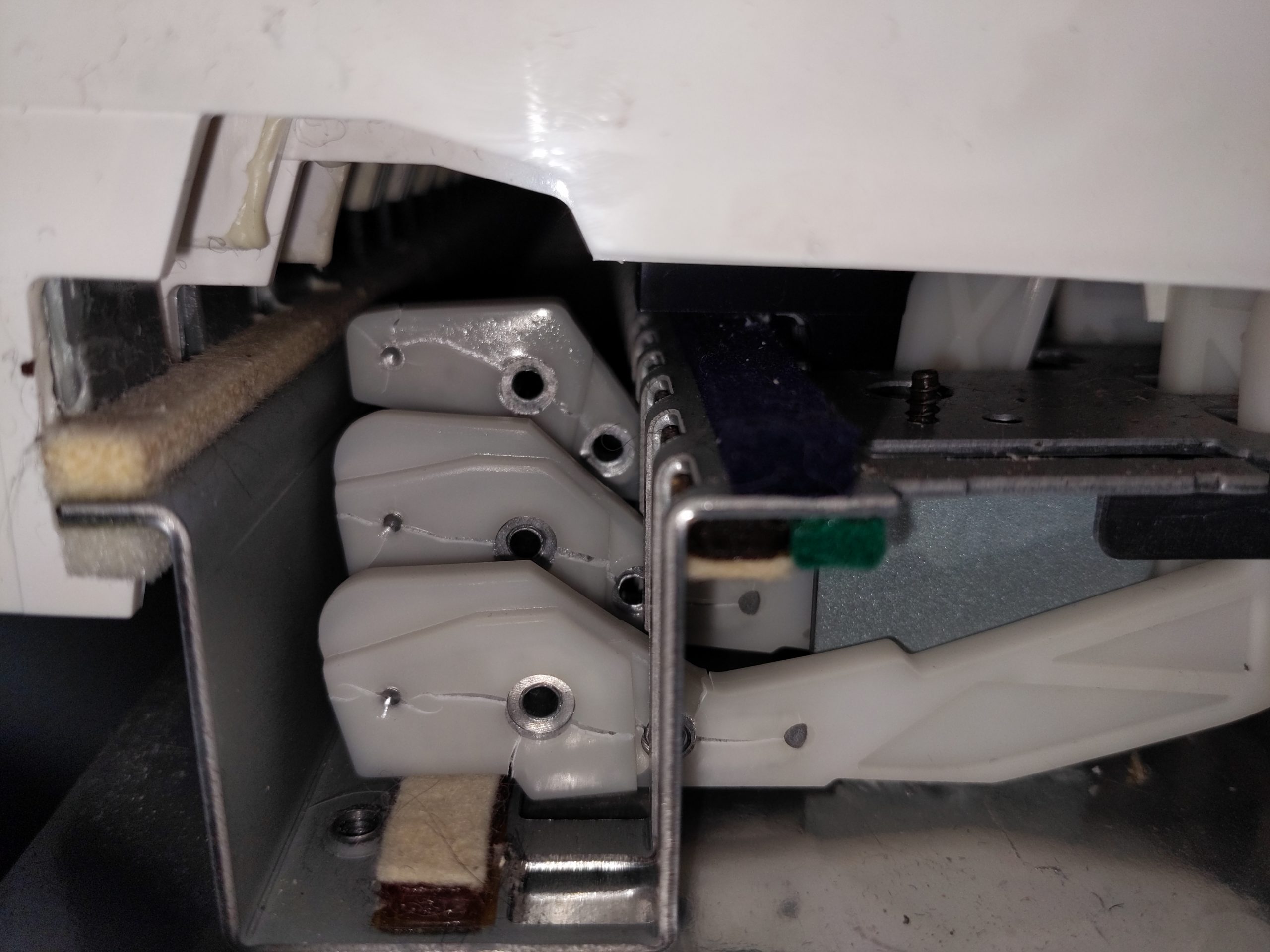
Hi I have been given a roland HP-1 Digital piano, It has a number pf keys that do not make a sound , I believe on researching, that it is the hammers? any other suggestions ? I would like to restore it, as this is to good to scrap, but very wary of the cost involved
chris
Hello Chris! The good news is that the Roland HP-1 does not use these hammers. If the keys aren’t making sound, but they’re moving up and down correctly, the issue is probably either the contacts or the contact circuit boards underneath them. The contacts are available new on Syntaur. They have a helpful blog post about it here. If just the rubber contacts need to be replaced, it’s a very worthwhile job. However, if there’s damage or corrosion on the contact circuit boards, repairs might not be possible, or might require an experienced technician.
Hi , Thank you very much for the information, I wonder if you could help with another matter, I have dismantled the necessary parts to remove the keys. the release mechanism is different to the ones I have seen on youtube videos, the ones I have have a square hole in the key, with an plastic orange tag that holds locks the key I have carefully tried to remove these, but I do not want to use brute force . is there a special tool,that releases them
kind regards
Chris Skeats
Yes, there is a trick to getting these keys out. Roland used to manufacture a special tool for removing keys from their SK-6 action, but a substitute can be made with paperclips. You can see both the original tool and the paperclip technique here. There’s a YouTube video that demonstrates removing the keys here.